
The Relationship between Lifetime Opioid Use and Mental and Physical Health among Incarcerated Individuals
Published:
| Author: Tanya Renn, John Moore, Christopher Veeh, Carrie Pettus
Relationships between opioid use and health, both physical and mental, have been discovered over the last decade or so, but these relationships have yet to be explored among incarcerated individuals. These relationships are important as they may have implications on the health of those who are incarcerated and nearing reentry, because higher rates of opioid use, as well as poor physical and mental health, are found among those who are justice-involved compared with the general population.
Category: Substance Use, Mental Health, Incarceration

Behavioral health literacy: A new construct to improve outcomes among incarcerated individuals
Published:
| Author: Carrie Pettus, Stephanie Kennedy, Tanya Renn, Stephen Tripodi, Lauren Herod, Danielle Rudes, Faye Taxman
In the United States, nearly 13 million adults are incarcerated in prisons and jails annually with significant negative public health consequences. Incarcerated individuals have disproportionate rates of behavioral health disorders (BHDs); untreated BHD symptoms bring people into incarceration settings and are associated with re-arrest after release.
Category: Incarceration, Mental Health, Reentry, Substance Use

Promoting Smart Decarceration as a Grand Challenge
Published:
| Author: Carrie Pettus, Stephen Tripodi, Oluwayomi Paseda
A resurgence of scholarship on transforming the criminal justice system and reducing the overreliance on incarceration occurred during the first decade of the 21st century. This scholarship situated the expansive reach of the criminal justice system and the need for reform within the realities of structural racism and pervasive substantial health and social disparities. Redburn, et al. 2014 focuses on the effects of mass incarceration on individuals and society as a whole, while Epperson, et al.
Category: Smart Decarceration
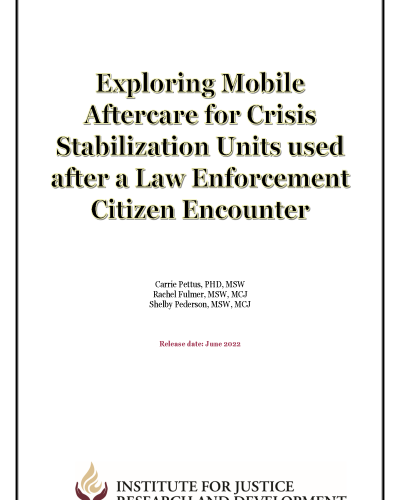
Exploring Mobile Aftercare for Crisis Stabilization Units used after a Law Enforcement Citizen Encounter
Published:
| Author: Carrie Pettus, Rachel Fulmer, Shelby Pederson
As public receiving facilities, CSUs offer a critical non-refusal option for law enforcement, meaning they are obligated to accept individuals brought under an emergency involuntary psychiatric hold. This CSU policy offers an important alternative to arrest for law enforcement, who often encounter individuals experiencing these types of crises. Research indicates that law enforcement often has repeat contact with individuals experiencing mental health and substance-related crises and that a history of interaction with the criminal justice system is common in the typical CSU patient.
Category: Law Enforcement, Reentry

Study protocol paper for the multisite randomized controlled trial of comprehensive trauma informed reentry services for moderate to high-risk young males releasing from state prisons
Published:
| Author: Carrie Pettus, Tanya Renn, Stephen Tripodi, Sarah Tamburri
This study will provide critical information about how trauma-informed reentry programming impacts traditional reentry outcomes (e.g., recidivism, housing, employment) and identify key mechanisms of action (e.g., reduced impulsivity and aggression). Coping with trauma symptomatology is a largely untapped area of scientific inquiry for criminal justice-involved populations, despite the significant role trauma plays in individuals’ lives. Results advance identification of critical components of trauma-informed reentry interventions for moderate- to high-risk young men.
Category: Trauma, Reentry, Well-Being, Community
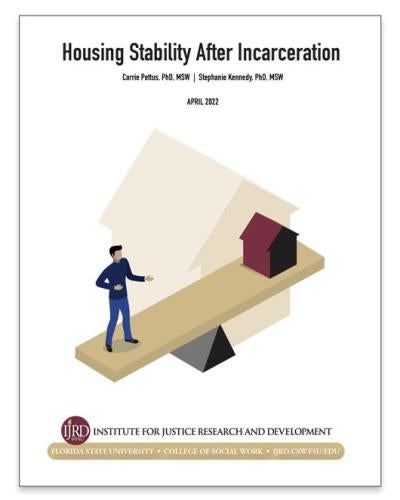
Housing Stability After Incarceration
Published:
| Author: Carrie Pettus, Stephanie Kennedy
This brief report examines changes in where and with whom individuals live, whether they consider themselves to be homeless, and whether they are paying rent or mortgage where they stay between leaving prison to 14-months post-release. These findings are situated within the broader context of reentry support, exploring the impact of both incarceration and reentry on families and the need to focus resources on those most in need.
Category: 5-Key Model for Reentry
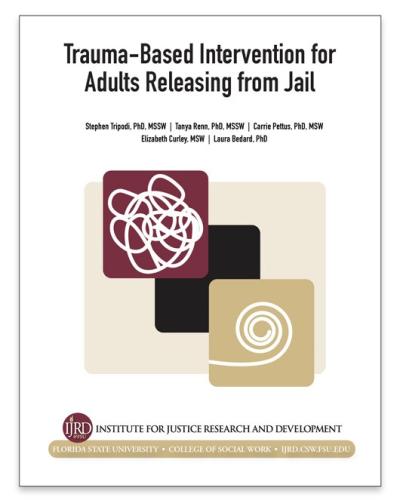
Trauma-Based Intervention for Adults Releasing from Jail
Published:
| Author: Stephen Tripodi, Tanya Renn, Carrie Pettus, Elizabeth Curley, Laura Bedard
Learn more about an innovative trauma-based intervention delivered to individuals releasing from a local jail in Florida. This report highlights all aspects of the study, showcases participants' perceptions of participation in trauma-based programming, and presents data on how the intervention affected participants' well-being and behavioral health after completion.
Category: Trauma
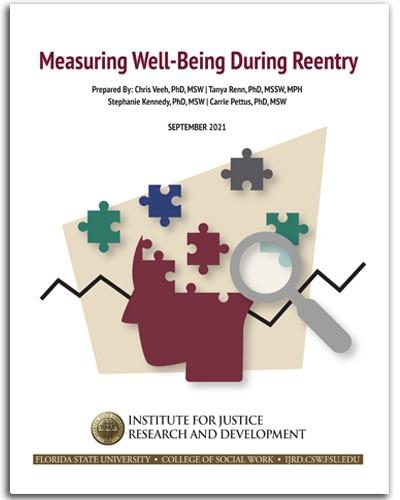
Measuring Well-Being During Reentry
Published:
| Author: Christopher Veeh, Tanya Renn, Stephanie Kennedy, Carrie Pettus
A growing number of scholars and reentry practitioners are seeking alternative approaches to identify how community stability and success can be measured for those returning home from incarceration to our communities. Our team developed a well-being-oriented conceptual framework – the Well-Being Development Model – and a manualized reentry program approach – the 5-Key Model for Reentry – which focus on human potential and thriving.
Category: 5-Key Model for Reentry, Well-Being

The Well-Being Development Model: A Theoretical Model to Improve Outcomes among Criminal Justice System–Involved Individuals
Published:
| Author: Carrie Pettus, Christopher Veeh, Tanya Renn, Stephanie Kennedy
This article proposes a new conceptual framework, the Well-Being Development Model (WBDM), to support the development, implementation, and assessment of innovative reentry interventions designed to increase well-being among the millions of individuals released from prisons and jails each year. In contrast to prominent models guiding reentry services, the WBDM increases incarcerated and formerly incarcerated individuals’ capacity to reach their full potential while addressing common problems and barriers to success.
Category: Well-Being, Reentry

Brief Report: COVID-19's Impact on Reentry Research
Published:
| Author: Carrie Pettus, Stephanie Kennedy
When the pandemic began to impact communities across the United States in March 2020, most community members were concerned about how their lives would be affected. Researchers with ongoing studies were also concerned about how the pandemic would affect their ability to assess outcomes in their ongoing research.
Category: 5-Key Model for Reentry
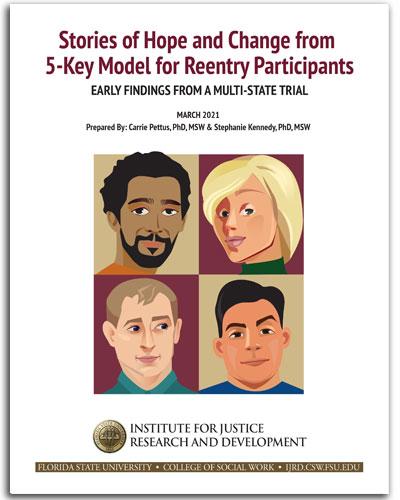
Stories of Hope and Change
Published:
| Author: Carrie Pettus, Stephanie Kennedy
This report presents interviews conducted with four 5-Key Model participants. Participants describe their lives and tell stories about overcoming challenges and finding success. They also describe how the 5 Keys helped them to make significant, positive changes to their lives and the ways 5-Key Model practitioners supported them in making these changes.
Category: 5-Key Model for Reentry

The Role of Preparatory Programming in Increasing the Effectiveness of a Sex Offender Treatment Intervention
Published:
| Author: Tanya Renn, Christopher Veeh, Melissa D. Grady, David Edwards, Carrie Pettus, Katherine Kelton
Increasing the effectiveness of programs designed to treat individuals who have sexually offended is a critical step in reducing the rates of sexual violence in our communities. Yet, the research on such programs have yielded inconsistent results with regards to their effectiveness in reducing sexual recidivism among participants. Some researchers have explored whether the dose of treatment impacts recidivism, but there remains limited knowledge around the dose-response relationship for individuals who have sexually offended.

